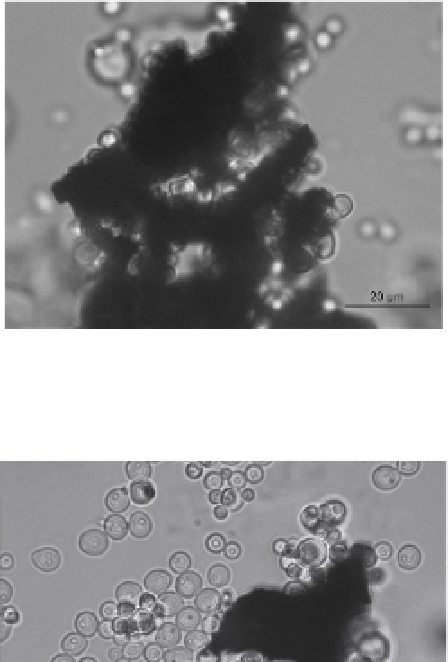Biomedical Engineering Reference
In-Depth Information
have been shown to increase
Candida
counts in the mouth (Arendorf & Addy, 1985) and in
the periodontal pockets of dental device wearers with gingivitis (Jewtuchowicz et al., 2007).
Inserted devices act as new reservoirs able to imbalance oral microflora. In a healthy mouth,
saliva protects oral mucosa against candidosis; in contrast, dry mouth is associated with
increased yeast counts and candidosis risk.
In vitro
, cigarette smoke condensates increased
adhesion of
Candida albicans
on orthodontic material surfaces such as bands, brackets,
elastics, and acrylic resin (Baboni et al., 2010).
Fig. 1.
Candida albicans
suspension mixed with titanium powder directly observed on
microscope in the absence of any stain procedure. Some blastoconidia are already adherent
to material (attachment can be attested by MTT test after 3 washings). Magnification: x1000.
Fig. 2. Titanium grain surrounded by blastoconidia clusters and filamentous structure
(pseudohyphae) after a two-week incubation. Magnification: x1000.
2.1
Candida
on dentures
Candida albicans
is often detected on methyl methacrylate polymers or acrylic resins from
dentures. Biofilm formation on dentures results from complex interactions among yeast,
bacteria, nutrients, and saliva or even serum proteins (Nikawa et al., 1997; Nikawa et al.,
2000).
Candida
carriage on acrylic resin has been reported in the literature as varying up to
more than 80% of the investigated dentures. For instance, yeasts were found in 14% of




